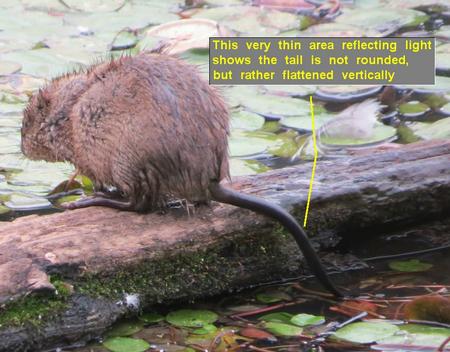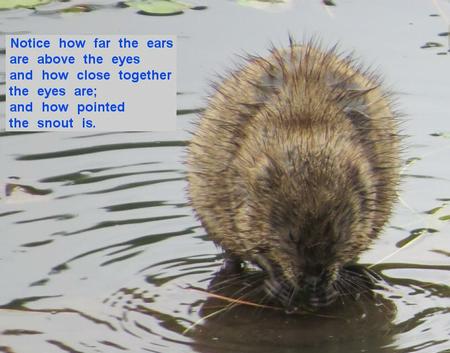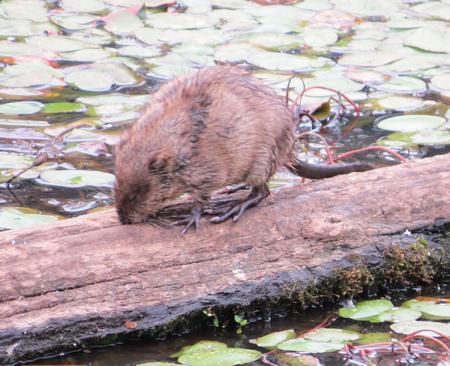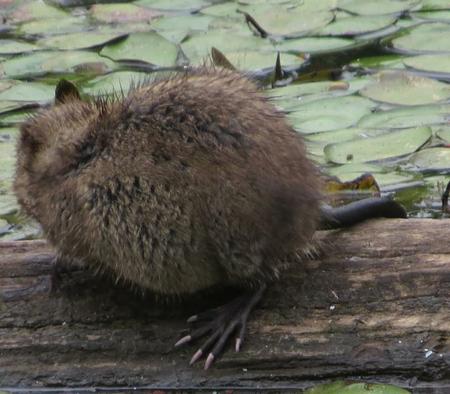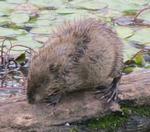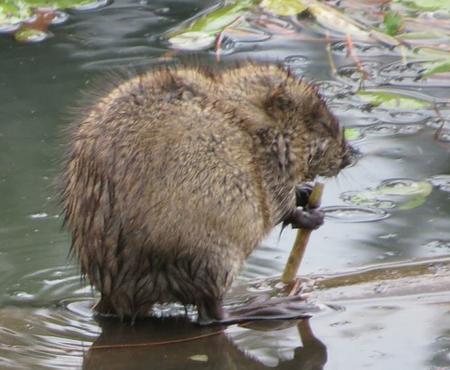Priscilla's
Bird Photography
Photos from personal trips AND trips with
Birds of Oregon and General Science, (BOGS)
in association with Eugene's Celeste Campbell Center
Priscilla Sokolowski
Eugene, OR



Yes we do have Muskrats at Delta Ponds!
For some reason, for many years I thought that Muskrats were not found in Western Oregon. I must have mis-interpreted some field guide or distorted my memory of what the range map said; or maybe I made the mistake of taking some fool's word for it when I first moved here in the mid-70s. In any case, even though I was well familiar with Muskrats from where I grew up in Michigan, I had not seen one since moving west decades ago.
Two years ago, a friend named Katie, who visits the Delta Ponds almost daily, told me she had been seeing a Muskrat there from time to time. Some time after that, I saw a small mammal which I thought might have been a Muskrat but because of the abundance of Nutria I could not be sure without a much better look at it. I finally got that much better look at it a week ago.
I'll dispense with any concern that my Muskrat was merely another Nutria, by pointing out the conclusive evidence first. My Peterson Guide to Mammals states unequivocally, that the Muskrat is the only mammal which has a vertically flattened tail.
CLICK ON PHOTO for larger image
This next photograph shows the flattened tail another way. A rounded tail would reflect light from 1/3 to 1/2 of it's surface. But in this photo we see light reflecting only from a thin edge, meaning the tail is not rounded.
CLICK ON PHOTO for larger image
Muskrats look a lot like Nutria which look a lot like Beaver, which look a lot like River Otters, which look somewhat like Mink. It is easier to distinquish some of these from each other by size than by anything else easily seen. Muskrats and Mink are the smallest of this group. The others are all nearly twice as large, and among those, the Beaver's large oval, flat tail uniquely identifies it from all the others. Otters are generally very active and move very quickly, while Nutria tend to be sluggish and often stationary for long periods of time. Also, Otters are almost always found in groups while Nutria are most often found solitary.
Here is the face of our Muskrat. Maybe the most significant thing is the narrowness of its snout. A nutria has quite a large nose in comparison. CLICK ON PHOTO for larger image
As for Mink and Muskrats, again their behaviors are usually very different. Mink are very active and run a lot along the bank or swim. They are not seen sitting still very often at all in the daytime. Muskrats, when seen, swim slowly, almost leisurely, and often stay in one place to eat for long periods of time. In those respects, these two differ in a parallel way to the differences between Otters and Nutria.
The toes of the rear feet on the Muskrat are only partially webbed, while on a Nutria they are more fully webbed. CLICK ON PHOTO for larger image
Generally if you want to know what is happening next at BOGS, or want to see the latest photos/reports,
you can find these on my "updates" page:
http://priscillanhk.com/updates.html
Enjoy!
Priscilla

